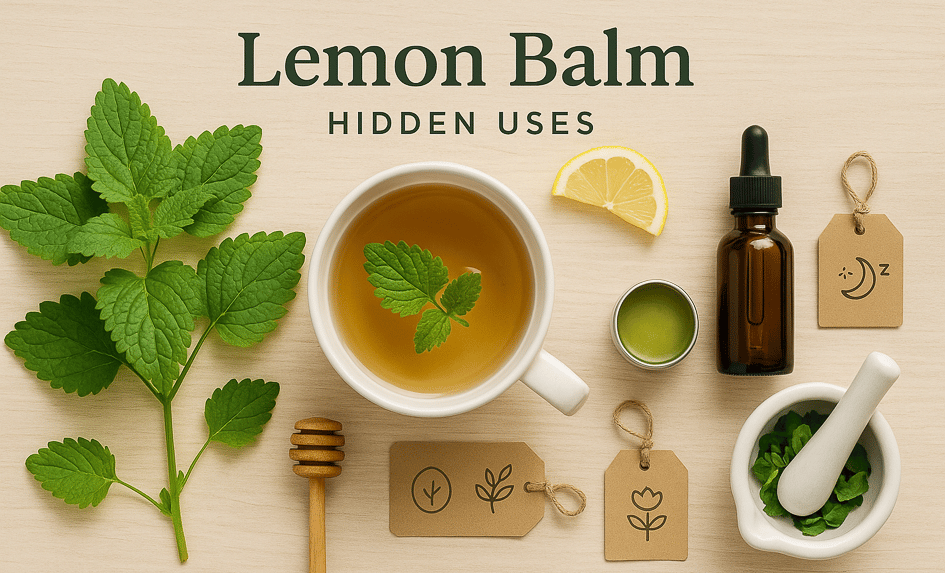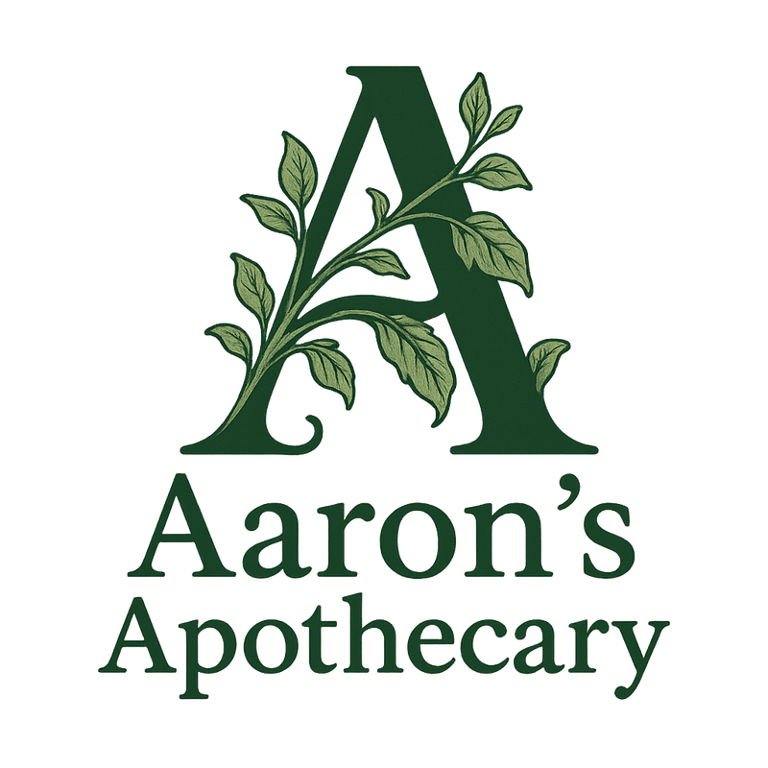Hidden Uses of Lemon Balm (Melissa officinalis) — 6 Evidence-Noted Ideas
Six lesser-known lemon balm uses—blood sugar, agitation, cold sores, dyspepsia combo, bruxism, thyroid cautions—plus simple prep tips. Hidden Uses of Lemon Balm
FEATURED
9/2/20253 min read


6 Hidden Uses of Lemon Balm (Melissa officinalis) — evidence-noted + how to think about each
A mint with a résumé. (We love you, chamomile, but make room on the shelf.)
Lemon balm gets typecast as “the calming mint,” but it quietly shows up in trials for blood sugar, agitation in Alzheimer’s, cold sores, and more. Below are six under-the-radar uses, what the studies actually did and how to think about each at home, plus quick safety notes.
Key takeaways
Evidence ranges from early/lab to small human RCTs—I flag which is which.
“How it’s used” describes study protocols, not medical advice. Think of it as “how the studies did it,” not “how your uncle did it once at the cottage.”
If you take meds (especially diabetes, thyroid, or sedatives), talk to your clinician first.
1) Better blood-sugar control (type 2 diabetes)
What’s lesser-known: Small human RCTs found lemon-balm leaf powder/extract improved fasting glucose and A1c vs placebo over ~8–12 weeks.
How people used it in studies: Encapsulated leaf powder/extract, daily; doses varied by trial.
How to think about it: If you’re on glucose-lowering meds, only consider under clinician supervision (hypoglycemia risk). Also not a license for butter-tart diplomacy, your meter still votes.
2) Calmer agitation + modest cognition gains in Alzheimer’s
What’s lesser-known: A double-blind RCT in mild–moderate Alzheimer’s reported better cognition and reduced agitation with M. officinalis extract vs placebo; small aromatherapy trials also show agitation improvements.
How it was used: Standardized oral extract; some trials used caregiver-managed essential-oil aromatherapy.
How to think about it: Discuss with the care team; watch for drowsiness and drug interactions. Small wins matter to caregivers; loop them in early.
3) Fewer “cold-sore” flare-ups (topical antiviral)
What’s lesser-known: Topical lemon-balm preparations shortened healing time and reduced symptoms of herpes labialis when applied early; lab work shows activity against HSV-1.
How it was used: Cream/ointment applied at the first tingle, then as labeled.
How to think about it: Useful adjunct, not a replacement for prescription antivirals when indicated. Speed matters, apply faster than you reply to group texts.
4) Functional dyspepsia/IBS symptom relief (combo formula)
What’s lesser-known: Iberogast® / STW-5—a blend including lemon-balm leaf among nine herbs—consistently improves functional dyspepsia/IBS symptoms in RCTs & meta-analyses.
How it was used: Labeled liquid drops with meals.
How to think about it: The benefit is for the combo, not lemon balm alone; check med interactions and product quality. Translation: your stomach’s needs help—this is the nine-herb one with part of the solution.
5) Sleep bruxism (teeth grinding) improvements (early data)
What’s lesser-known: A recent systematic review noted small trials where lemon-balm-based protocols reduced sleep-bruxism indices—promising but preliminary.
How it was used: Protocols varied (oral herb regimens ± other care).
How to think about it: Consider only as part of a bigger plan (mouthguard, stress work), and coordinate with your dentist/clinician. Mouthguard stays. Lemon balm is the backstage crew, not the headliner.
6) Possible “calming” in mild hyperthyroid states (mechanistic/early)
What’s lesser-known: Bench studies suggest lemon-balm constituents may interfere with TSH-receptor activity and thyroid-stimulating antibodies. Human evidence is limited; major medical sites advise caution with thyroid meds.
How to think about it: Do not self-treat thyroid disease. If you take levothyroxine or antithyroid drugs, talk to your doctor before any lemon-balm regimen. Thyroids are thermostats. Please don’t DIY the wiring or you will be needing some Sage.
Quick safety notes (the boring but important part)
May potentiate sedatives and interact with thyroid meds; use caution with diabetes meds (hypoglycemia risk).
Avoid in pregnancy/breastfeeding due to limited high-quality safety data.
Stop 1–2 weeks before surgery.
Patch-test topicals; stop if irritation.
If anything feels weird, it is. Pause and ask a pro.
This guide is educational—not medical advice. Work with your clinician for diagnosis and treatment.
How to use at home (simple preparations)
Sleep tisane: 1–2 tsp dried (or a small handful fresh) in 250 ml hot water; steep 5–10 min.
Herb’s note: The “I’ll just have one sip” that became eight hours.Lemon-balm honey: Loosely pack fresh leaves in a jar, cover with honey; rest 1–2 weeks; add to tea or toast.
Herb’s note: The jar you’ll label and then still call “that green honey.”Topical dab: Cooled lemon-balm tea or a labeled balm; apply at first tingle (avoid open skin).
Herb’s note: Earlier beats stronger. (Herpes labialis is a sprinter.)
Grow & harvest (Zones 4–6)
Part sun; pinch for bushiness; harvest before flowering for peak aroma. It’s mint. Contain it unless you like your yard lemon-scented and unionized.
Byline:
Aaron Peterson • Last updated: Sept 2, 2025 • Ottawa, Canada
Filed under: “nice when a calm herb also does overtime.”
Selected sources & further reading
We read the dry stuff so your tea doesn’t have to.
Wellness
Explore herbal guides and wellness products online.
Contact
© 2025. All rights reserved.
